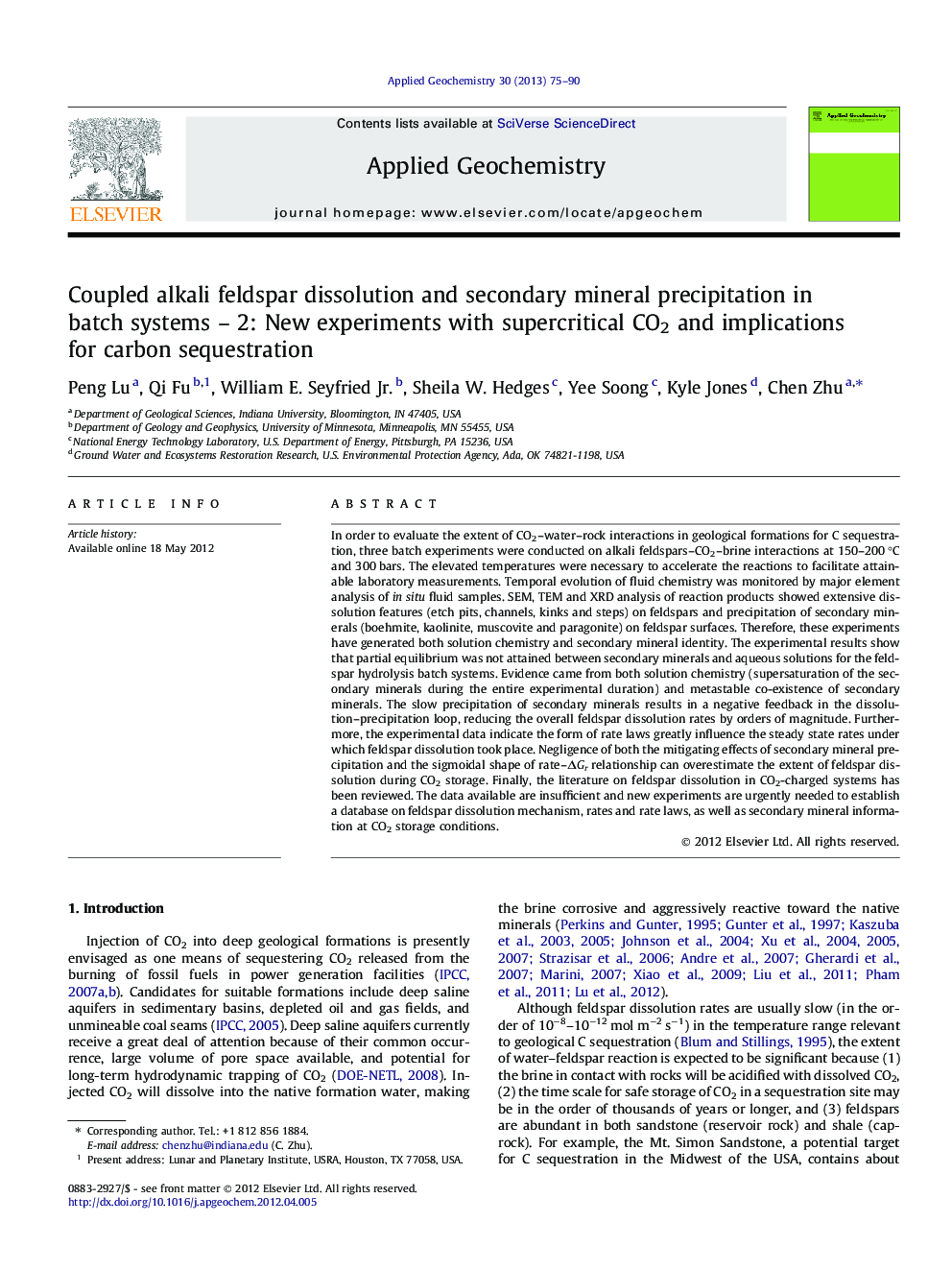| Article ID | Journal | Published Year | Pages | File Type |
|---|---|---|---|---|
| 4435968 | Applied Geochemistry | 2013 | 16 Pages |
In order to evaluate the extent of CO2–water–rock interactions in geological formations for C sequestration, three batch experiments were conducted on alkali feldspars–CO2–brine interactions at 150–200 °C and 300 bars. The elevated temperatures were necessary to accelerate the reactions to facilitate attainable laboratory measurements. Temporal evolution of fluid chemistry was monitored by major element analysis of in situ fluid samples. SEM, TEM and XRD analysis of reaction products showed extensive dissolution features (etch pits, channels, kinks and steps) on feldspars and precipitation of secondary minerals (boehmite, kaolinite, muscovite and paragonite) on feldspar surfaces. Therefore, these experiments have generated both solution chemistry and secondary mineral identity. The experimental results show that partial equilibrium was not attained between secondary minerals and aqueous solutions for the feldspar hydrolysis batch systems. Evidence came from both solution chemistry (supersaturation of the secondary minerals during the entire experimental duration) and metastable co-existence of secondary minerals. The slow precipitation of secondary minerals results in a negative feedback in the dissolution–precipitation loop, reducing the overall feldspar dissolution rates by orders of magnitude. Furthermore, the experimental data indicate the form of rate laws greatly influence the steady state rates under which feldspar dissolution took place. Negligence of both the mitigating effects of secondary mineral precipitation and the sigmoidal shape of rate–ΔGr relationship can overestimate the extent of feldspar dissolution during CO2 storage. Finally, the literature on feldspar dissolution in CO2-charged systems has been reviewed. The data available are insufficient and new experiments are urgently needed to establish a database on feldspar dissolution mechanism, rates and rate laws, as well as secondary mineral information at CO2 storage conditions.
► Three batch experiments on alkali feldspars–CO2–brine interactions. ► Partial equilibrium not attained between secondary minerals and aqueous solutions. ► The form of rate laws affects the steady state feldspar dissolution rates.
